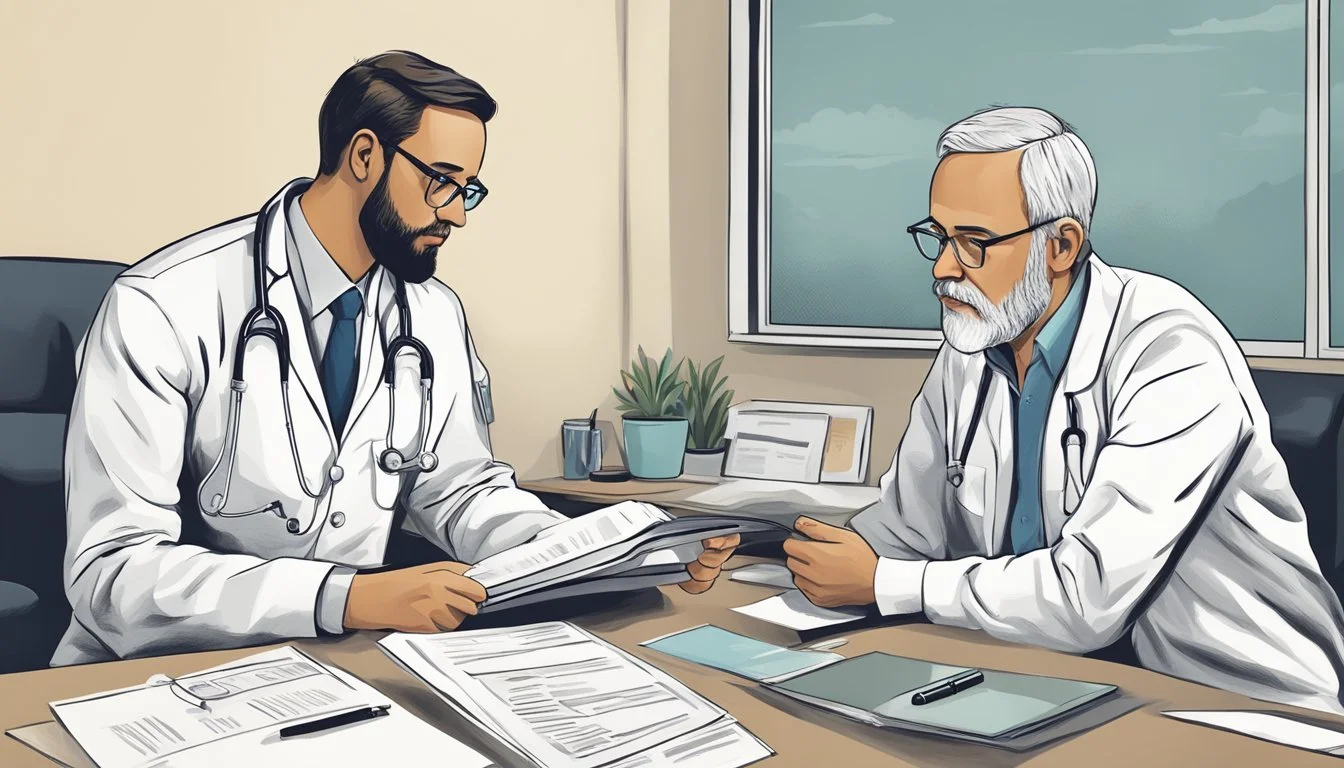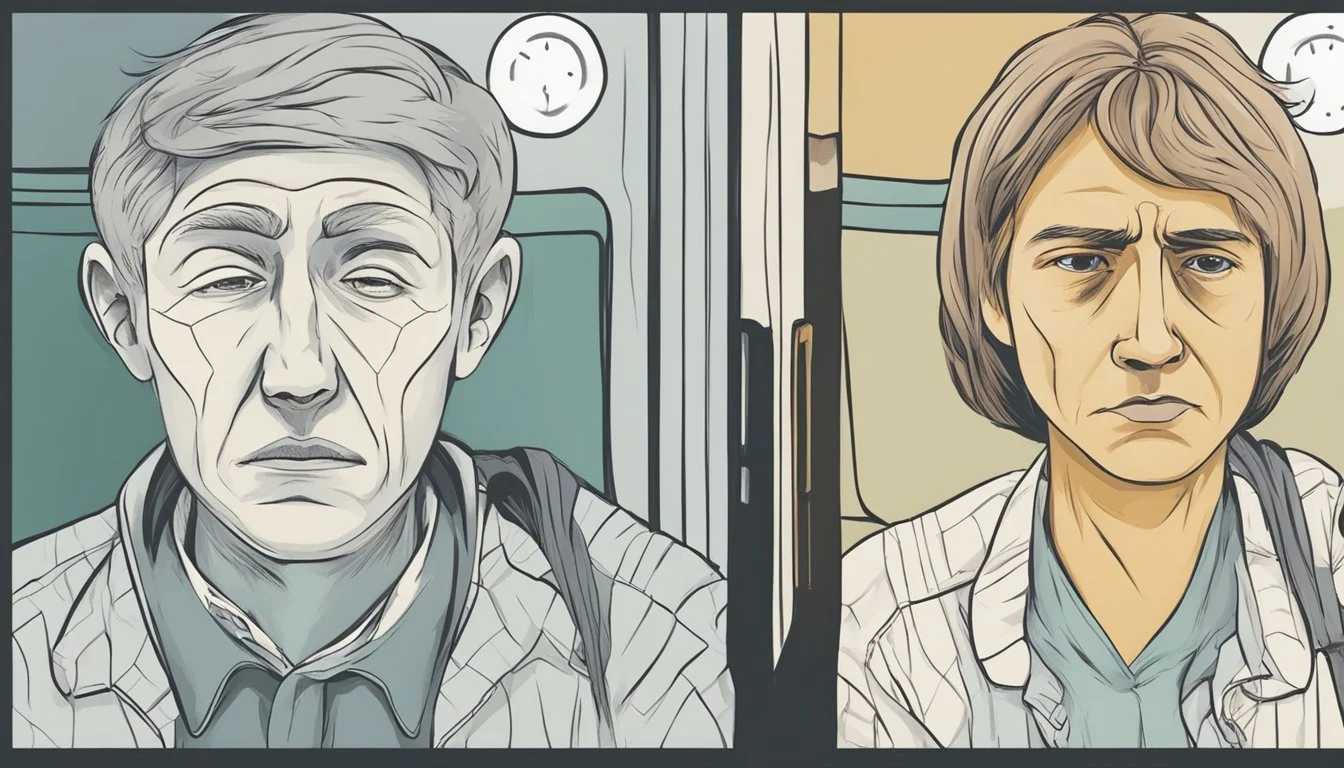5 Differences Between PTSD and Conversion Disorder
Key Facts to Know
Post-Traumatic Stress Disorder (PTSD) and Conversion Disorder are two distinct mental health conditions that often cause confusion due to some overlapping symptoms. While both involve the body's response to stress, they manifest and impact individuals in different ways. Understanding these differences is crucial for accurate diagnosis and effective treatment.
This article aims to clarify the distinctions between PTSD and Conversion Disorder, providing insight into their unique characteristics. Readers will gain a clearer perspective on how these conditions differ, which can aid in better recognizing and addressing each disorder.
1) Definition: PTSD involves re-experiencing traumatic events.
Post-Traumatic Stress Disorder (PTSD) is a mental health condition triggered by exposure to a traumatic event. This condition causes individuals to re-experience the traumatic event in various ways.
Re-experiencing can include having upsetting thoughts or memories about the trauma. These intrusive thoughts can occur unexpectedly and can be highly distressing for the individual.
PTSD also often involves recurrent nightmares related to the traumatic event. These nightmares can be vivid and can contribute to disturbed sleep patterns.
Individuals with PTSD may go through flashbacks, where they feel as if they are reliving the traumatic event. This can happen suddenly and can lead to intense emotional and physical reactions.
Another symptom of re-experiencing is severe emotional distress when exposed to reminders of the trauma. These reminders can be in the form of people, places, or even certain smells or sounds.
For more detailed information on PTSD symptoms, including re-experiencing, visit Verywell Mind. The criteria for PTSD are detailed further in the DSM-5, which classifies PTSD separately as a trauma- and stressor-related disorder.
2) Definition: Conversion disorder manifests physical symptoms without a medical cause.
Conversion disorder, also known as functional neurological symptom disorder, presents with physical symptoms that lack a physiological basis. The condition involves a complex interaction between the mind and body, resulting in symptoms like paralysis, blindness, or seizures.
Individuals experience these symptoms involuntarily, and they are not under voluntary control. Despite the absence of a detectable medical cause, the symptoms cause significant distress and impairment in daily functioning.
Conversion disorder is a recognized psychiatric condition. It emphasizes the role of psychological factors in manifesting physical symptoms. This can often be misunderstood, leading to challenges in diagnosis and treatment.
For more detailed information, you can explore Cleveland Clinic and WebMD. To understand its broader context within neurological symptoms, refer to the Mayo Clinic.
3) Symptoms: PTSD includes flashbacks and nightmares.
Post-traumatic stress disorder (PTSD) manifests through various distressing symptoms. Individuals with PTSD often experience flashbacks, which are intense and vivid re-experiences of the traumatic event. These can be triggered by reminders of the trauma and can cause significant disruption to daily life.
Nightmares are another common symptom of PTSD. These nightmares are often incredibly vivid and directly related to the traumatic event. The intensity of these nightmares can lead to severe sleep disturbances, affecting overall well-being.
Flashbacks and nightmares contribute to heightened anxiety and hypervigilance. This constant state of alertness can exacerbate other symptoms, such as irritability and difficulty concentrating. The persistent nature of these symptoms often requires comprehensive treatment strategies.
Understanding and recognizing these symptoms is crucial in differentiating PTSD from other mental health conditions. For more detailed information on PTSD symptoms, visit Mayo Clinic’s PTSD page.
4) Symptoms: Conversion disorder includes neurological symptoms like paralysis
Conversion disorder, also known as functional neurologic disorder, manifests primarily through neurological symptoms. These symptoms are not attributable to any underlying neurological disease.
One striking symptom is paralysis. Individuals may experience sudden and unexplained loss of movement in certain body parts. This paralysis is real and significantly affects their daily lives.
Other symptoms can include seizures, abnormal gait, or other movement disorders. These are typically involuntary and can be quite distressing.
Sensory symptoms, like loss of vision or hearing, may also occur. Unlike common neurological diseases, these symptoms do not have a direct physical cause.
These symptoms often arise in response to psychological stress. It's important to recognize these signs for proper diagnosis and treatment options.
For more detailed information, visit Conversion Disorder at Mayo Clinic.
5) Diagnosis: PTSD is diagnosed through patient history and symptoms.
Post-traumatic stress disorder (PTSD) diagnosis begins with a detailed patient history. Clinicians explore past traumatic events and their impact on the individual's daily life.
The diagnostic process often involves a psychological evaluation. This evaluation includes discussions about symptoms, such as nightmares and flashbacks. These symptoms must meet criteria outlined in the DSM-5.
The DSM-5 specifies that PTSD symptoms must persist for more than a month. It includes criteria such as intrusive memories, avoidance, negative changes in thinking and mood, and alterations in arousal and reactivity.
The Clinician-Administered PTSD Scale for DSM-5 (CAPS-5) is a common tool used. This 30-item questionnaire helps establish the presence and severity of PTSD. It ensures a thorough and standardized evaluation.
Physical examinations may also be performed. These exams rule out other medical conditions that could cause similar symptoms. Such comprehensive assessments ensure that PTSD is accurately diagnosed, guiding appropriate treatment plans.
Overview of PTSD and Conversion Disorder
Post-Traumatic Stress Disorder (PTSD) and Conversion Disorder are both serious mental health conditions, though they differ significantly in symptoms and underlying causes. Understanding each condition helps differentiate their unique characteristics.
Understanding PTSD
PTSD is a psychiatric disorder that occurs in people who have experienced or witnessed a traumatic event. Symptoms include intrusive memories, nightmares, and severe anxiety.
People with PTSD often relive the traumatic event through flashbacks. This can lead to emotional distress and difficulty functioning in daily life. Other common symptoms include avoidance of anything reminiscent of the trauma, negative changes in mood and cognition, and increased arousal and reactivity.
Effective treatments for PTSD typically involve therapy, such as Cognitive Behavioral Therapy (CBT), and medications like selective serotonin reuptake inhibitors (SSRIs). Early intervention can significantly improve outcomes.
Understanding Conversion Disorder
Conversion Disorder, also known as Functional Neurological Symptom Disorder, presents with neurological symptoms that are incompatible with recognized medical conditions. These symptoms can include seizures, paralysis, or sensory loss, and are not intentionally produced.
The condition is often associated with psychological stress or trauma, though not always. Unlike PTSD, conversion symptoms are a manifestation of psychological conflicts being expressed through physical symptoms.
Diagnosis is made through the exclusion of other medical causes. Treatment usually involves psychotherapy, including CBT, and sometimes physical therapy to address functional impairments. Identifying and addressing any underlying psychological issues is crucial for effective management.
People with this disorder often benefit from a multidisciplinary approach in their care, integrating mental health and medical treatments to improve their significant distress and functioning.
Causes and Risk Factors
PTSD and Conversion Disorder have distinct causes and risk factors, contributing to their unique characteristics and impacts on individuals.
Causes of PTSD
PTSD, or Post-Traumatic Stress Disorder, often results from experiencing or witnessing traumatic events. Common causes include military combat, serious accidents, natural disasters, sexual assault, and childhood abuse. These events can leave a lasting psychological impact, making it difficult for individuals to recover fully without professional help.
Trauma exposure alone may not cause PTSD; individual variability in response to stress plays a role. Biological factors, such as genetic predisposition, and pre-existing mental health conditions, like anxiety or depression, further contribute to the likelihood of developing PTSD. Social support networks are also critical; individuals with limited support are at higher risk.
Causes of Conversion Disorder
Conversion Disorder, known as Functional Neurologic Disorder (FND), stems from psychological conflicts manifesting as physical symptoms. These symptoms can include paralysis, non-epileptic seizures, or loss of sensory function without a medical explanation.
Risk factors include having a history of mental health issues, such as anxiety or depression. Stressful life events, such as family problems or job dissatisfaction, often act as triggers. Additionally, personality traits like being highly conscientious or perfectionistic may increase vulnerability.
Interestingly, Conversion Disorder can run in families, suggesting a potential genetic component. Females are more likely to develop this condition, especially if a first-degree female relative has experienced it. Symptoms usually appear suddenly after a stressful event, making early intervention crucial.
Symptoms and Diagnosis
Post-Traumatic Stress Disorder (PTSD) and Conversion Disorder have distinct symptoms and diagnostic criteria. Understanding these differences is crucial for proper identification and treatment.
PTSD Symptoms
PTSD manifests after exposure to a traumatic event. Common symptoms include:
Re-experiencing the trauma: Flashbacks, nightmares, and intrusive thoughts.
Avoidance: Steering clear of reminders related to the trauma, such as places, people, or activities.
Negative changes in beliefs and feelings: Persistent anxiety, depression, or feelings of guilt.
Hyperarousal: Being easily startled, feeling tense, having difficulty sleeping, or irritability.
These symptoms cause significant distress and impair daily functioning, often requiring therapeutic interventions such as cognitive-behavioral therapy, medication, or a combination.
Conversion Disorder Symptoms
Conversion Disorder, also known as Functional Neurologic Symptom Disorder, presents with neurological symptoms unexplained by medical or neurological conditions. Symptoms include:
Motor function issues: Weakness, paralysis, or abnormal movements such as tremors.
Sensory function issues: Loss or alteration of sensation, including blindness or deafness.
Seizures: Psychogenic non-epileptic seizures, which resemble epileptic seizures but lack neurological basis.
Emotional factors often trigger these symptoms, which can significantly impact daily life. Diagnosis typically involves ruling out other neurological conditions and might include therapy focusing on emotional and psychological health.
For a detailed overview on Conversion Disorder, consider reviewing the Cleveland Clinic resource for comprehensive information.
Treatment and Management
Effective management strategies can significantly improve the quality of life for individuals with PTSD and Conversion Disorder. Treatment approaches for each condition often involve a combination of therapy, medication, and supportive care tailored to the individual's needs.
PTSD Treatment Options
Psychotherapy is a cornerstone in PTSD treatment. Cognitive Behavioral Therapy (CBT), particularly Trauma-Focused CBT, helps individuals process traumatic events and change negative thought patterns. Eye Movement Desensitization and Reprocessing (EMDR) is another effective therapy that uses guided eye movements to process and integrate traumatic memories.
Medications often include antidepressants like selective serotonin reuptake inhibitors (SSRIs) to help alleviate symptoms such as depression and anxiety. In some cases, antipsychotic medications are prescribed when symptoms are severe or don't respond to other treatments.
Supportive Care, including group therapy and family therapy, provides emotional support and helps strengthen the patient's support system. Incorporating mindfulness practices and stress-reduction techniques can also be beneficial.
Conversion Disorder Treatment Options
Psychotherapy, especially CBT, plays a crucial role in treatment. Therapy focuses on identifying stressors or psychological conflicts triggering physical symptoms. This helps the patient develop coping strategies and understand the psychological basis of their symptoms.
Physical and Occupational Therapy may be prescribed to help patients regain motor function and adapt to any physical impairments. These therapies also aim to improve daily functioning and independence.
Medications are less commonly prescribed but may include antidepressants if there is a co-occurring mood disorder.
Education and Support from healthcare providers about the nature of the disorder can help demystify the condition for patients and their families. Building a strong therapeutic alliance and ensuring consistent follow-up care is essential for effective management.
For more detailed information, check out Cleveland Clinic's overview of conversion disorder or the DSM-5 criteria outlined here.






